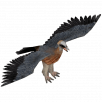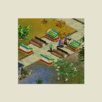-
Content Count
7873 -
Joined
-
Last visited
-
Days Won
250
Content Type
Forums
Blogs
Store
Calendar
Downloads
Gallery
Websites
Links Directory
Classifieds
Everything posted by SLGray
-
Creator/Designer/Author: Laura 'Tamara' Henson Language: English Bugs/Information/Notes: This the first pack for Awesome Australia. It contains the Megalania, Marsupial Lion (Tylacoleo), Marsupial Wildcat (wakaleo), Killer kangaroo (Ekaltadeta), the Mihurung (Genyornis), the Cave Devil (a species of tazmanian devil), an Opal Thylacoleo Fountain, a Killer Kangaroo Bouncy Ride, and a Black Wakaleo Bouncy Ride. The megalania has a minor bug that causes it to turn invisible if you zoom out. Requirements: ZT2, Endangered Species, & Extinct animals Megalania Marsupial Lion Marsupial Wildcat Killer kangaroo Mihurung Cave Devil Scenery Australia_items.z2f Cave_Devil.z2f Killer-Kangaroo.z2f Megalania.z2f Mihirung.z2f Thylacoleo.z2f Wakaleo.z2f
-
Creator/Designer/Author: Laura 'Tamara' Henson Language: English Bugs/Information/Notes: Nine kangaroo species and a bouncy ride for your zoo, no bugs. Requirements: (ZT2) Eastern Grey Kangaroo Common Wallaroo Swamp Wallaby Northern Nailtailed Wallaby Bridled Nailtailed Wallaby Northern Bettong Banded hare Wallaby Purple necked Rock Wallaby Mala Banded Hare Wallaby.z2f Bridled Nailtail.z2f Eastern Grey Kangaroo.z2f Mala.z2f Northern Bettong.z2f Northern Nailtailed Wallaby.z2f Purple Necked Rock Wallaby.z2f Swamp Wallaby.z2f Wallaroo.z2f x999-Bridled Bouncy Ride.z2f
-
Creator/Designer/Author: Laura 'Tamara' Henson Language: English Bugs/Information/Notes: This is a bonus animal for my Awesome Australia expansion pack, it includes the common brush-tailed possum and the filter for the pack. There are no bugs that I have found and the animal has four variants. The filter is necessary for the rest of the Awesome Australia pack in order to find the downloads quickly. Requirements: ZT2 and Endangered Species Brushtail Possum_Filter.z2f
-
-
-
-
Creators: Caddienoah and Exoticcats It will need the following files in the dlupdate file before opening up the workbench. The files are available at ZooTeK Phoenix: Brick Themed Expansion Pack 2 by Genki, Coloured Brick Paths Combined by Genki, Terrain Waterfall Fences by Genki, and Underground Water Passage by African Raptor. Description: “ This workbench is a reworking of an ingame map and is a revised edition of a workbench that is available at ZooTek Phoenix (by Caddienoah) by the same name. It is dedicated to my design partner Exoticcats...who helped with it's original design and concept.” Picture: Needs One Cats Reservoir Falls Workbench by Caddienoah and Exoticcats.zip
-
Designers: Exoticcats and Caddienoah There are no additional files needed to use the workbench for zoo building. Description: “ This workbench is dedicated a young lady who loves Zoo Tycoon, but due to medical conditions, cannot play as often as she likes. Therefore we designed a Retreat where she can play as often as she likes.” Picture: Needs One Connies Retreat Workbench by Caddienoah and Exoticcats.zip
-
Creator: Kingcobrasaurus (Original Creator:) DM, for the raptor template .nif model and for the Borealosaurus model, which is (I believe) one of his public domain projects. Requires: EA, but ES and AA are recommended to experience the download at its fullest. (The animals use some items and food that are only in those expansions.) Language : English only - if you want to translate into your language, feel free! Contains: Australovenator (updated), Leaellynasaura (updated), and Wintonotitan (updated). Pictures: Australovenator.z2f Leaellynasaura.z2f ZZZZZ - Wintonotitan.z2f
-
Creator: Zooasaurus (meshing by King Hoopla) Requires:ZT2 + MM It is not in English. Contains: Animals: Freshwater Crocodile Cuban Crocodile Siamese Crocodile Dwarf Crocodile Gharial False Gharial Plants: White Mangrove Reskins for: Mugger Crocodile Saltwater Crocodile Fixes: -added Mugger and Saltwater Crocodile gender size difference -updates for Mugger and Saltwater Crocodile -Nile Crocodile size fix -place in your main ZT2 folder Notes: -All crocodilians in this pack, including the reskinned ones, have at least one varient! -Delete the Saltwater Crocodile update hack if you have it, as it is contained in this pack -Add a "Z-" infront of the name,(it'll look like Z-Crocodilian Pack 2)to make the Saltwater Crocodile and Nile Crocodile fix work Pictures: White Mangrove: Cuban Crocodile: Siamese Crocodile: Gharial: Freshwater Crocodile: False Gharial: Dwarf Crocodile: KrokodillenPack2.z2f
-
-
-
-
-
-
-
-
-
-
-
-
Creator: Dennis1991 Dieren/Animals: Steller Zeekoe/Steller's Seacow Gestreepte Dolfijn/Striped Dolphin Subantarctische Zeebeer/Subantarctic Fur Seal Watervaraan/Water Monitor Kemps Schildpad/Kemp's Ridley Cymbospondylus Zijde Haai/Silky Shark Zalmhaai/Salmon Shark Zoutwaterkrokodil/Saltwater crocodile Nachthaai/Night Shark Middellandse Monniksrob/Mediterranean Monk Seal Noordelijk Gladde Dolfijn/Northern Right Whale Dolphin Zuidelijk Gladde Dolfijn/Southern Right Whale Dolphin Gangeshaai/Ganges Shark Cubaanse Doornhaai/Cuban Dogfish Stormbandpinguïn/Chinstrap Penguin Planten/Foliage: Knolwier/Furbelows Kussenvormige Koloniezakpijp/Pillow Synascidian Reuzen Vallisneria/Vallisneria Gigantea Obejecten/Objects: Potvis Hal/Sperm Whale Hall Gestreepte Zebra Zeepaard/Zebra Seahorse Gestreepte Zeepaard/Striped Seahorse Grote Blauwring Octopus/Greater Blue Ringed Octopus Pacifische Reuzenoctopus/Pacific Giant Octopus BP Boog/BP Arch Taningia Danae/Dana Octopus Squid Caribische Rif Inktvis/Caribbean Reef Squid Blauwgespikkelde Pijlstaartrog/Bluespotted Ribbontail Ray Bythograea thermydron/Hydrothermal vent crab BP Prullenbak/BP Trashcan Marine Life Waarschuwing/Marine Life Warning Hoog Spanning Waarschuwing/High Voltage Warning Niet Voeden Waarschuwing/No Feeding Warning Krokodil Waarschuwing/Crocodile Warning Extra: Laadbalken/Loading bars BP Filter Pictures: Z-Blue_Planet_Pack_Part_2.z2f
-
Creator: Dennis1991 Dieren/Animals: Amerikaanse Lepelsteur/American Paddlefish Atlantische Witte Marlijn/Atlantic White Marlin Bandrob/Ribbon Seal Atlantische Duivelsrog/Atlantic Devil Ray Diamantsteur/Russian Sturgeon Gramper/Rissos Dolphin Groenlandse Haai/Greenland shark Haringhaai/Porbeagle shark Zandloperdolfijn/Hourglass Dolphin Chinese Witte Dolfijn/Chinese white dolphin Kaapse Pelsrob/Cape Fur Seal Kaphamerhaai/Bonnetheadshark Karetschildpad/Hawksbill Turtle Luipaardhaai/Leopardshark Oorkwal/Commonjellyfish Guinese Tweeklauw/Pignosed Turtle Potvis/Sperm Whale Witpuntrifhaai/White tip reef shark Witsnuitdolfijn/White-beaked Dolphin Zandhagedis/Sand Lizard Spinnerdolfijn/Spinner Dolphin Koperhaai/Bronze Whaler Varianten Manta/Variants Manta ray Zwaardvis/Sword Fish Blauwe Haarkwal/Blue jellyfish Bonus Landdier/Bonus animal: Mexicaanse Wolf/Mexican Wolf Ambients/Ambiants: Tang pack 4 doktervissen/Tang pack 4 tangs Harlekijnkikker/Atelopus Frog Madagaskar Goudkikker/Golden Mantella Vuurbuikpad/Oriental Fire-bellied Toad Gladderoodoogkrab/Smooth Redeye Crab Rodekoraalkrab/Red Coral Crab GroenEiKrab/Green Egg Crab Noordzeekrab/Edible Crab Zonnebaars/Blue Gill Lantaarnvis/Lanternfish Sierlijke Koraalduivel/Kodipungi Lionfish Oogvlek Dwerg Koraalduivel/Twin spot Lionfish Plaatsbare Koi's/Placeable Koi's: Tang pack 4 doktervissen/Tang pack 4 tangs Gladderoodoogkrab/Smooth Redeye Crab Rodekoraalkrab/Red Coral Crab GroenEiKrab/Green Egg Crab Noordzeekrab/Edible Crab Demania Cf Toxica SchubKarper/Europian Carp Zonnebaars/Blue Gill Lantaarnvis/Lanternfish Sierlijke Koraalduivel/Kodipungi Lionfish Oogvlek Dwerg Koraalduivel/Twin spot Lionfish Planten/Foliage: ReuzenTafelKoraal/Giant Table Coral Bloedkoraal/Precious coral Dodemansduim/Dead man's fingers Grote Rafelvis School/Sea Dragon School Zeeanjelier/Plumose anemone Extra: Laad Balken/Loading Bars Nieuwe Locaties/New locations BP Filter Nieuwe Camera/New Camera Blue Planet Fans Blue Planet Crew Pictures: Z-Blue_Planet_Pack_Part_1.z2f
-
Designer: ELCR Requires: ZT2, ES, and EA The long-awaited UXP Enormous Elephants in now available for Zoo Tcoon 2 Extinct Animals. It contains several elephants from around the world, living and extinct ones: -Borneo pygmy elephant - Elephas maximus borneensis -African forest elephant - Loxodonta cyclotis -Desert elephant - L. a. africana -Syrian elephant - E. m. asurus -Chinese elephant- E. m. rubridens -Carthaginian elephant - L. c. pharaohensis -Asian and European straight-tusked elephants -several dwarf Mediterranean elephants -dwarf Sardinian mammoth - Mammuthus lamarmorae All of the elephants: Elephant Pack 1.z2f zzzzzzzz_ElephantPack_ 1.z2f
-



























